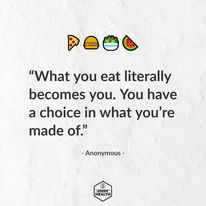
Should I eat according to the 2023 Food Pyramid?
The first Food Pyramid was created in the 1970s in Sweden by a special committee to suggest nutritionally balanced meals at a reasonable cost. In 1992, the United States Department of Agriculture (USDA) introduced a Food Pyramid to recommend servings of each food group, which previous guides did not do.
The 2023 Food Pyramid modified the recommendations in an attempt to improve the health of Americans who continued to experience increasing incidences of cardiovascular diseases and Type 2 diabetes.
For example, meats are to be consumed monthly or in small amounts compared to the previous recommendation of 2 to 3 servings per day. Eggs, poultry, and dairy are to be taken daily to weekly, compared to prior recommendation of 2 to 3 servings a day. Fish and seafood are to be eaten a few times per week compared to 2 to 3 times per day. Olive oil can be consumed in variable amounts daily compared to sparingly. Fruits and vegetables can be consumed daily compared to 3 to 5 servings per day. Whole grains, bread, legumes, and nuts can be taken daily compared to 6 to 11 servings per day of bread, cereal, rice, and pasta.
In essence, the new Food Pyramid is primarily based on the Mediterranean diet. Overall, that diet is mostly plant-based and focuses on healthy fats that include virgin olive oil, avocados, nuts, salmon, and sardines. Red meat consumption is limited to a few times a month.
As you can see, the emphasis of both the Pyramids, the original and the new USDA version, is on minimizing the intake of dietary fat, especially saturated fat such as cholesterol, which literally creates the plaque that blocks blood passages and leads to heart attacks and strokes.
However, in my opinion, the New Pyramid will not help achieve the objective of reducing the incidence of cardiovascular events or Type 2 diabetes. This is because it fails to address the root cause of excess food consumption. For example, the investigators failed to take into consideration that vegetarians who do not consume animal products also get the same cardiovascular diseases. Even more importantly, although the calculation of the average intake of food groups can be useful for the comparison of study results, it cannot be directly applicable to all individuals because each person’s nutrient needs are different.
This major deficiency is what I am trying to offset in my books, Eat Chew Live and, Diabetes: The Real Cause and The Right Cure, in order to prevent and reverse Type 2 diabetes through my recommendations. Exercise, weight control, and reducing the consumption of grains and grain flour products are the keys to avoiding Type 2 diabetes and its myriad complications.
I want to make the transition from grains, but what can I eat?
The ancestors of modern humans appeared on Earth about 300,000 years ago. Consumption of wild grains started only after about 200,000 years of human existence and the domestication of rice and grains like wheat and rye dates back to only about 10,000 BCE. This means that humans survived without consuming significant amounts of grain and grain products for the majority of human life on Earth.
If you want to eat grains, I suggest that you emphasize alternatives to wheat, rice, and corn. The table here shows how much carbohydrate, fiber, fat, and protein (in grams) is contained in a variety of grains per 100 grams.

As you can see, in general, if you begin substituting oats, quinoa, and millet in your diet for wheat, rice, and corn, you will obtain the benefits of less carbohydrate, more fiber, fat, and more protein..
Once you become comfortable with the above, you can attempt further reduction of complex carbohydrates by substituting the following whenever possible.
Almond flour – With a consistency like corn meal, almond flour can be used in pastry, confectionary, and other baking items. Per 100 grams, almond flour contains 21.6 g carbohydrates, 12.5 g dietary fiber, 49.9 g fat, and 21.2 g protein.
Chickpea flour – Also known as besan, this is a pulse flour made from a variety of ground chickpea called Bengal gram or kaalachana. Per 100 grams, it contains 57 g of carbohydrates, 10 g of dietary fiber, 6 g of fat and 22 g of protein.
Cauliflower flour – This is an alternative to rice flour. Per 100 grams, it contains 5 g carbohydrates, 2 g dietary fiber, 0.3 g fat and 1.9 g protein.

As a best-selling author and Nationally Syndicated Columnist, Dr. John Poothullil, advocates for patients struggling with the effects of adverse lifestyle conditions.
Dr. John’s books, available on Amazon, have educated and inspired readers to take charge of their health. There are many steps you can take to make changes in your health, but Dr. John also empowers us that we must demand certain changes in our healthcare system as well. This article is an excerpt taken from “Diabetes: The Real Cause and the Right Cure”, now available in a second edition.
Follow or contact Dr. John at drjohnonhealth.com.






